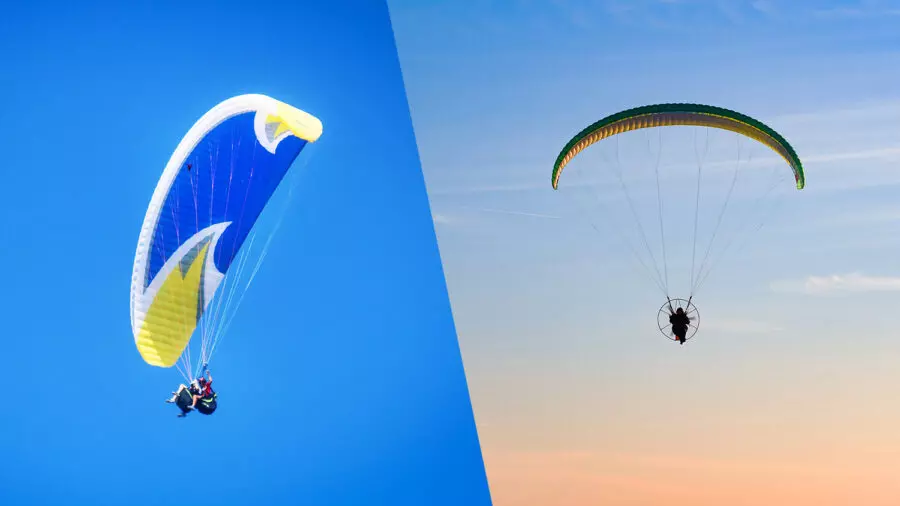The allure of soaring through the sky, feeling the wind beneath your wings, is a dream many share․ Paragliding offers a unique opportunity to experience this dream, but a common question arises: Do paragliders have engines? The answer, while seemingly simple, opens up a world of possibilities and variations within the sport․ Understanding the nuances of paragliding equipment is crucial for anyone considering taking to the skies․ Let’s delve into the fascinating world of paragliding and explore the answer to this fundamental question․
Understanding Paragliding: The Basics
Paragliding is a recreational and competitive adventure sport․ Paragliders are lightweight, free-flying, foot-launched glider aircraft with no rigid primary structure․ The pilot sits in a harness suspended below a fabric wing․ Unlike hang gliders, paragliders rely on the shape of the wing itself to generate lift․
- Wing Shape: The wing is designed to inflate with air, creating a stable airfoil․
- Control: Pilots control the paraglider using brake lines that alter the shape of the wing․
- Launch: Paragliders are launched from a slope or hill, running into the wind until the wing inflates and lifts the pilot off the ground․
Paragliding Without an Engine: Pure Flight
The most common form of paragliding relies solely on natural forces․ These paragliders do not have engines․ They utilize rising air currents, such as thermals (columns of warm air rising from the ground) and ridge lift (air deflected upwards by a ridge or hill), to stay aloft and gain altitude․ This type of paragliding is often referred to as “free flying․”
Harnessing Natural Forces
Free flying paragliders depend on skill and understanding of weather patterns to maximize their flight time and distance; Pilots learn to identify and utilize these rising air currents to stay airborne for hours and travel considerable distances․
Factoid: The longest paragliding flight recorded was over 500 kilometers! This feat showcases the incredible potential of harnessing natural forces․
Paramotoring: Paragliding with Power
While traditional paragliders are engine-free, there’s a powered version called paramotoring․ A paramotor is essentially a paraglider with a small engine and propeller attached to the pilot’s back․ This allows for powered flight, independent of rising air currents․
- Engine Power: Paramotors typically use small, two-stroke engines․
- Takeoff: Paramotors can take off from flat ground․
- Flight Duration: The engine allows for longer flight durations and greater control over altitude and direction․
Factoid: Paramotors often weigh between 40 and 70 pounds, requiring a good level of physical fitness to operate․
Key Differences Between Paragliding and Paramotoring
The fundamental difference lies in the presence of an engine․ Paragliding is about utilizing natural lift, while paramotoring provides powered flight․ This distinction impacts launch techniques, flight duration, and overall experience․
- Paragliding: No engine, relies on natural lift, launch from slopes, silent flight․
- Paramotoring: Engine-powered, launch from flat ground, engine noise, longer flight duration․
Choosing the Right Option for You
The choice between paragliding and paramotoring depends on individual preferences and goals․ Those seeking a more natural and serene experience often prefer paragliding․ Those wanting greater control and the ability to fly from anywhere might opt for paramotoring․
Factors to Consider
- Experience Level: Both activities require proper training and certification․
- Physical Fitness: Paramotoring requires carrying the weight of the engine․
- Noise Preference: Paramotoring involves engine noise․
- Location: Paramotoring allows for flight from more locations․
FAQ: Frequently Asked Questions About Paragliding Engines
Q: Do all paragliders have engines?
A: No, the vast majority of paragliders do not have engines․ These are known as “free flying” paragliders․
Q: What is a paramotor?
A: A paramotor is a paraglider with a small engine and propeller attached to the pilot’s back, allowing for powered flight․
Q: Is paramotoring more dangerous than paragliding?
A: Both activities have inherent risks․ Paramotoring adds the complexity of engine operation and maintenance, but with proper training and precautions, both can be enjoyed safely․
Q: Can I convert a regular paraglider into a paramotor?
A: While technically possible, it’s not recommended․ Paramotor wings are often designed with specific characteristics to handle the engine’s thrust and weight․ It’s best to use equipment specifically designed for paramotoring․
Q: Do I need a license to fly a paramotor?
A: Regulations vary by country and region․ It’s essential to check local regulations and obtain the necessary certifications before flying a paramotor․

